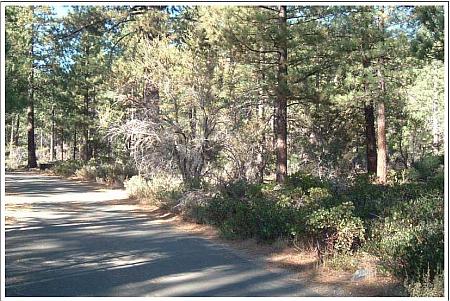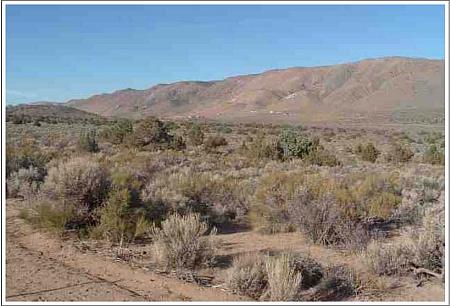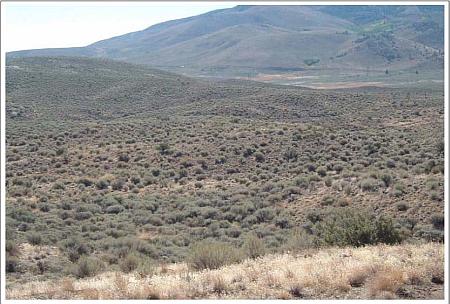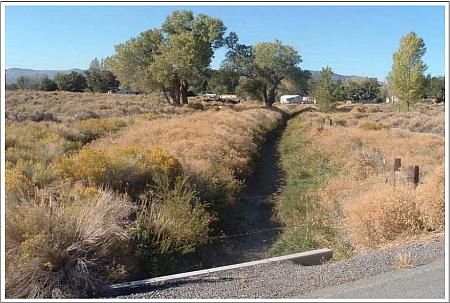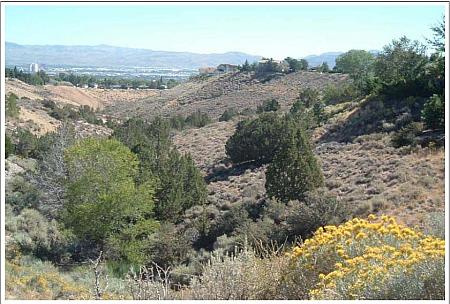Appendix C - Photographs of Representative Fuel Types
Representative Fuel Types
Photo 1. Dense Jeffrey pine, dead and down fuels, and ladder fuels create an extreme fuel hazard condition susceptible to ignition of a dangerous and catastrophic crown fire.
Photo 2. Big sagebrush and bitterbrush is a common wildland-urban interface fuel type in Washoe County. This fuel loads was estimated at three tons per acre and considered a moderate fuel hazard. As juniper encroaches on the fans and in the valleys, the fuel load increases and fuel hazard become more severe.
Photo 3. The cheatgrass component in shrub communities greatly increase the ignition risk and fuel hazard condition. In years with above normal precipitation and abundaunt herbaceous plant growth, the fuel hazard can increase from moderate to high in one growing season.
Photo 4. Shadscale and greasewood is a common wildland-urban interface fuel type in some parts of Washoe County. This area around Palomino Valley was estimated at two tons per acre and considered a moderate fuel hazard.
Photo 5. Irrigation ditches and drainages are prone to invasion of tall whitetop, a state-listed noxious and invasive species. Fuel reduction treatments should include reseeding with fire-resistant species to control invasion of noxious weeds and cheatgrass.
Photo 6. Open space areas within some communities are heavily vegetated and create hazardous fuel conditions that could “wick” fires into residential areas.

